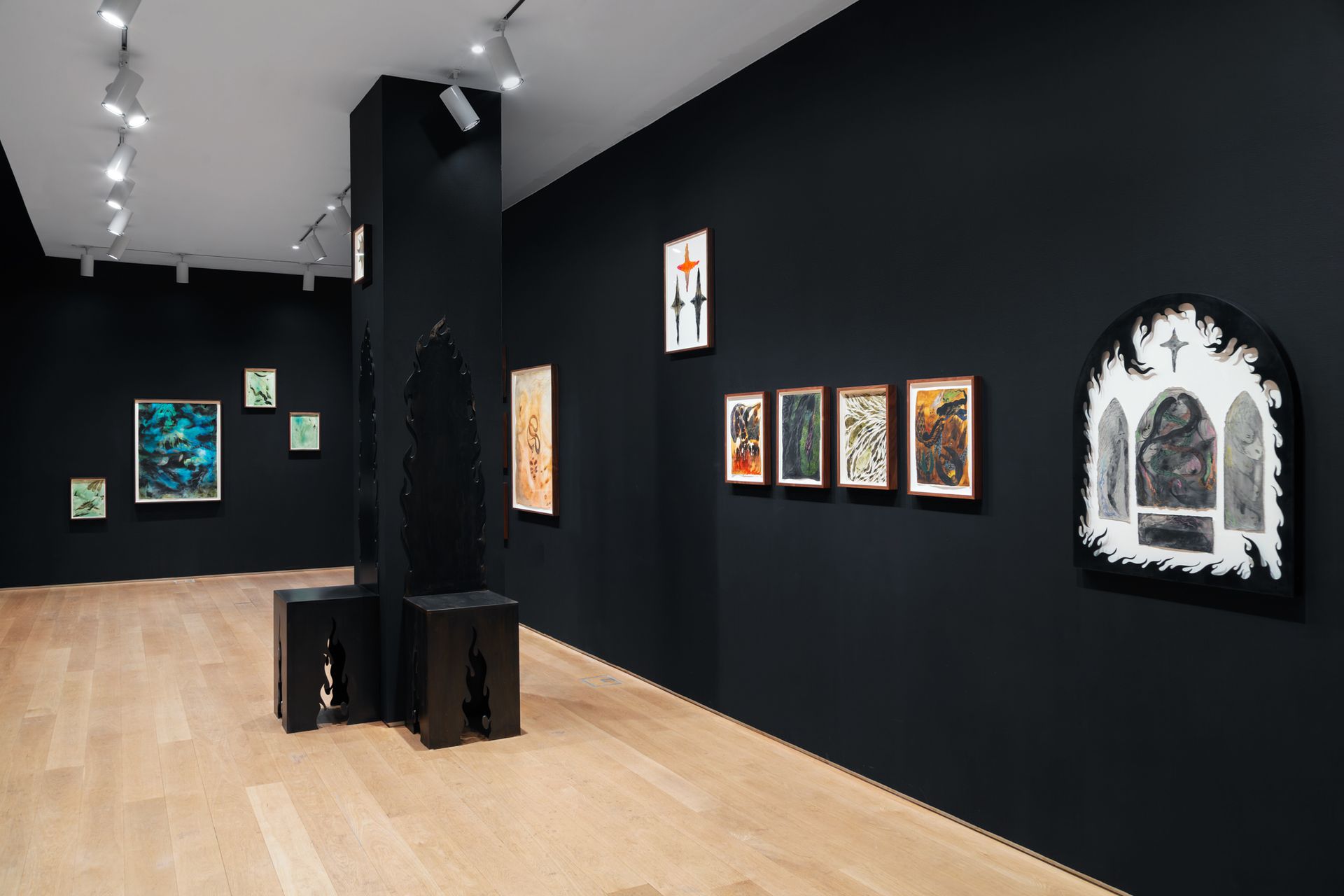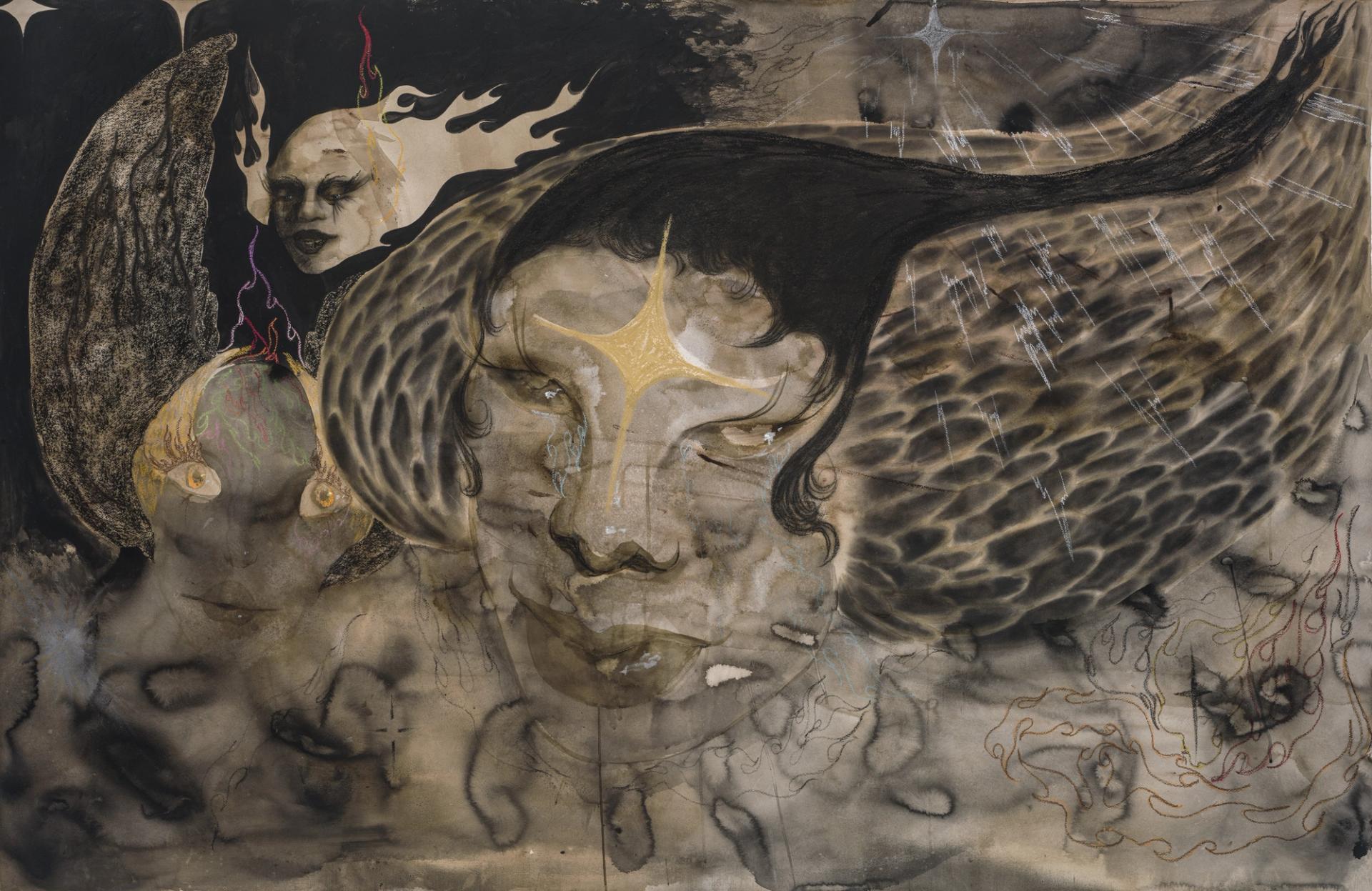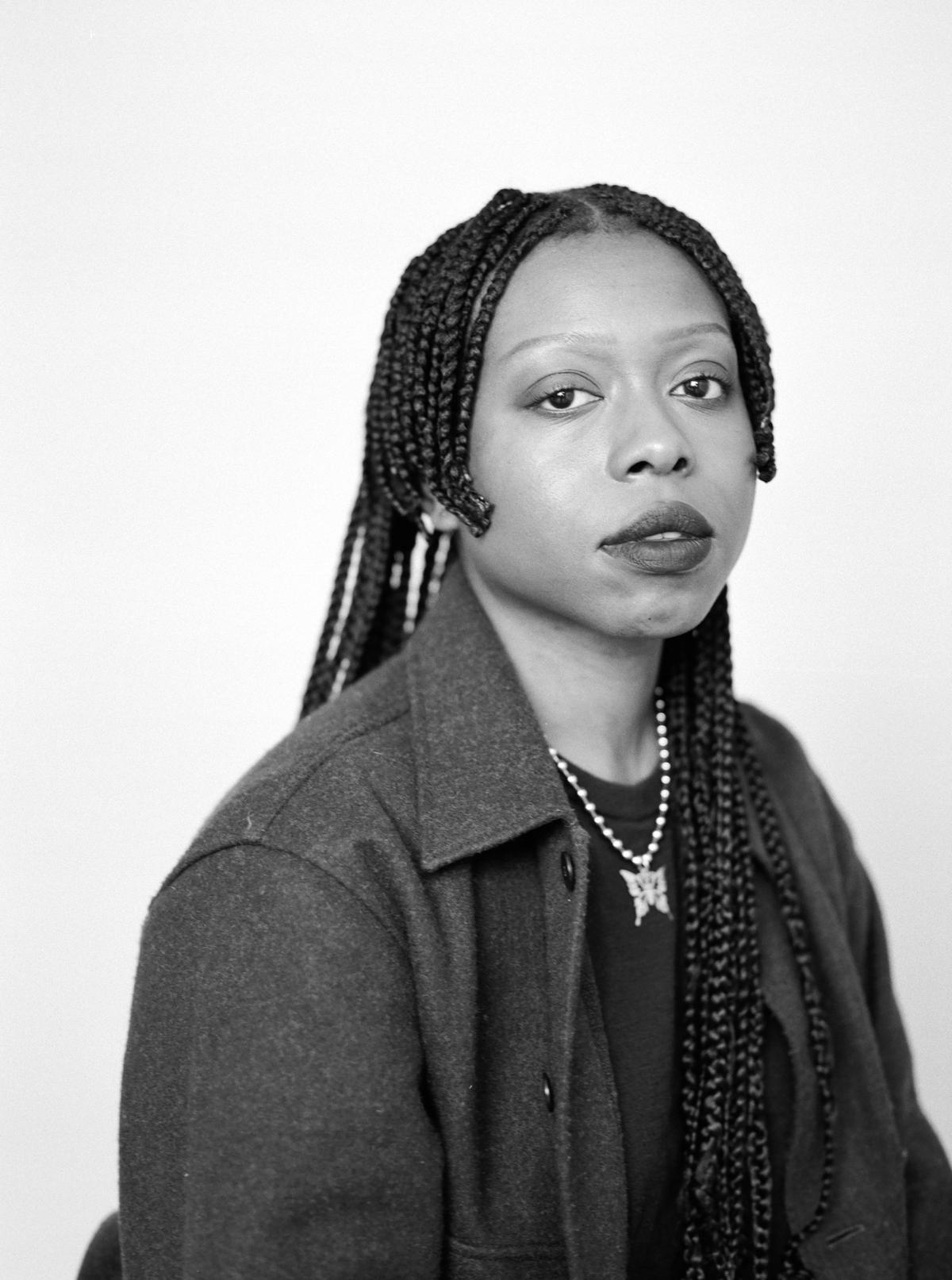Romantic British artist William Blake referred to his phantasmagorical, frenzied illustrations as “prophetic works”, describing imagination as proof of “human existence itself”. That oracular legacy has found new footing in the work of Naudline Pierre, who translates her visions with a quixotic, chimerical eye towards Black female subjectivity.
Her art historically informed visions vacillate between nightmarish and idyllic, mapping a rich, personal mythology haunted by figures as gorgeous as they are disquieting. The daughter of a Haitian minister, Pierre focuses less on explicit Christian symbolism and more on the visual adrenaline of zealotry, decoding ecstatic affect into a weird and wonderful new storytelling language.
This Is Not All There Is, Pierre’s solo exhibition at New York’s Drawing Center (until 3 September), marks a new development in her iconographic oeuvre. Organised by the centre's chief curator Claire Gilman, this is Pierre’s first show to exclusively highlight her works on paper, a departure from the bright, saturated world of her oil paintings. Dark walls and muted, creepy colors lend This Is Not All There Is the experiential character of an archive, inviting the viewer to discover her secrets through the glyphic residue of lost worlds. Each hatch, splatter and drag communicates with its own sacred energy, universally connective in its searing specificity. Hot off the artist’s exceptional solo booth at Frieze New York in May, This Is Not All There Is gleans metaphysics from intuition, decolonising Delphic communique with plenty of mischief to spare.
Works by Pierre, who is based in Brooklyn, have been featured in exhibitions at the Museum of Contemporary Art in Chicago, Shulamit Nazarian gallery in Los Angeles, Perrotin's space in Seoul, Stephen Friedman Gallery in London and Nicodim Gallery in Bucharest, among others. Her work is included in the permanent collections of the Pérez Art Museum Miami, the Dallas Museum of Art and the Kemper Museum of Contemporary Art in Kansas City, among others.
The Art Newspaper caught up with Pierre to discuss her experience of creating the Drawing Center show, the inner workings of her practice and the freedom she finds in concocting her stories.

Installation photo of Naudline Pierre's This Is Not All There Is, including iron-work thrones and frame, at the Drawing Center Daniel Terna
The Art Newspaper: I wanted to ask about your flame-licked frames. At what point in your practice did they start showing up, do you work with a fabricator, what is their significance? Tell me everything.
Naudline Pierre: My entrance into making ironworks or having them fabricated was for my show with James Cohan last year. I wanted to do a wrought-iron gate, so I did. Then I made these painted structures that needed plinths, and so I thought, why not use an iron form? The flame cutouts came from those initial prints that I made; I knew that I wanted to continue with the altarpiece format which I also have been doing since 2018. I made a really big one for my show at the gallery last summer. It feels a lot like drawing; even though I'm not welding these things, I'm making the drawing, working with the architect, and then they're transforming my drawing to a technical blueprint that the fabricators can understand. The finished product is this wonderful one-to-one; my drawing is one thing, and then comes to life into an iron form.
Because I was doing a show that's completely dedicated towards works on paper, I wanted to have something to butt up against how ephemeral paper can be. It made sense for me to keep going with the iron as a part of the thought process. Having those two pieces in that arched frame with the flames brought together this very intense material with something a little bit lighter, and then talked to the thrones that I made for the space as well.
Your work has an internal logic of spirituality that's not directly apparent to the viewer, but also doesn't have to be. Could you talk about that tension between the manifest and clandestine in your practice?
With the work that I'm making, it is such an intuitive process, but there's a lot that I like to leave as a mystery to myself, as the one who's making it. I do like the fact that the viewer has to piece these elements together, something that feels familiar with something that feels really foreign. Allowing things just to come together as they are—that's a really big part of my practice. Yes, I can step away from something and look at it critically or think about it through the lens of art history and so on, but when I'm making the work, I'm just making the work. I feel like a vessel, like I'm receiving messages from a parallel universe.
And it can be seen through a lot of different lenses, not just spiritual and religious. I feel like these characters allow themselves to be revealed to me because they carry messages for me and for others and and it helps me to know that they're alive somewhere else, doing something else, having a different experience with matter than I am. There's something so special about allowing something to be what it is. I think there's freedom in just making something, understanding what it holds. I don't feel like I need to give myself this huge responsibility of saying something. I'd rather just feel it and do something that goes beyond language. I'm making this work for myself.
How do you think your work engages or doesn’t engage with institutional identity discourse?
First and foremost, I think of my work as a means of freedom, escape and potential. I try not to burden myself with the responsibility of making a statement because I think the fact that I exist and I'm making work and I'm searching for freedom is the statement. I'm here to make images and to make my life mean something to the people I love and to myself and keep it moving. What I think about is how I was feeling that day, and what I wanted to feel, my interactions—I'm thinking about my own experience and trying to be authentic in that way.
I try to keep those questions out of the studio because ultimately it'll just cloud your vision, at least for me. And there's so much to fight against just to be able to make an image. That is my sacred space to escape and communicate with things I'm seeing and just have a moment with these beings that have visited me and created this world for me to explore. I'm more interested in exploring their world than what is wrong with mine.

Naudline Pierre, This, I Know to Be True, 2023 Courtesy Naudline Pierre and James Cohan, New York. Photograph by Paul Takeuchi
How does the focus on works on paper in this show impact or change the way you approach your practice or the way that these figures and stories talk to you?
I paint intuitively, but a painting feels different. The material is different. I'm using oil. You can sort of mix things and cover things and scrape things away. But it also feels like the substrate is different and it carries a different feeling, whereas paper feels, at least with this show, like a really big expansion into play, chance and the unknown in a different way than painting or sculpture. My process opened up; I wasn’t thinking so much; it could just be like a snapshot. It's just a thing. I'm ripping it and I'm holding it close—things are appearing to me out of ink swatches. And I think it fed back into my painting practice, for sure.
Making drawings and paintings on paper had always kind of been part of my life, but it was more so like these were notes to myself, no one had to see them. I started making them and got some feedback, and then I was like, “Okay, maybe I can make more and just see how I can work with this material in a way that feels like I can share it with people.” Because it is really intimate, at least for me. With the space, Claire [Gilman] and I really wanted to lean into the fact that it's cozy and narrow. It felt like, “Let's spend some time here, let’s get closer.” So I think having dark walls and lower lighting and hanging some of the works really high created movement in space that works well.
- Naudline Pierre: This Is Not All There Is, until 3 September, the Drawing Center, New York


